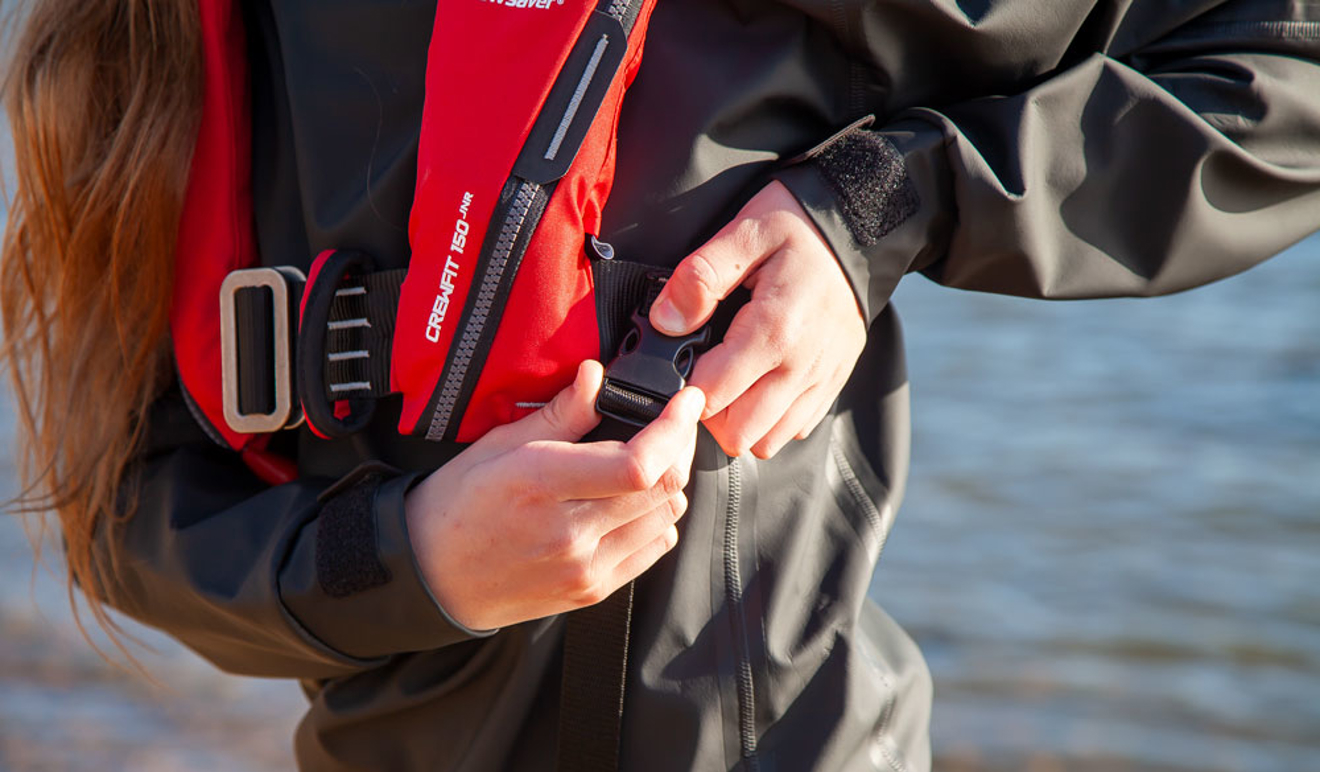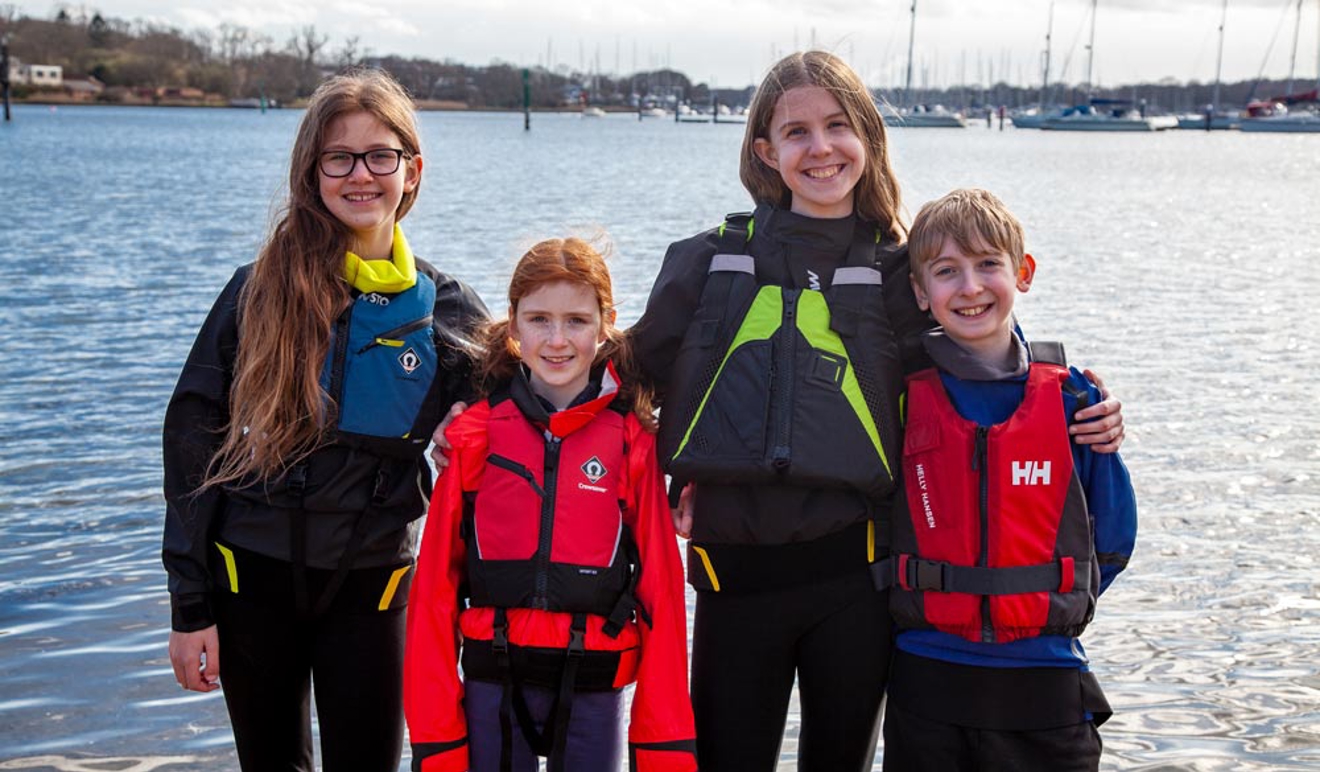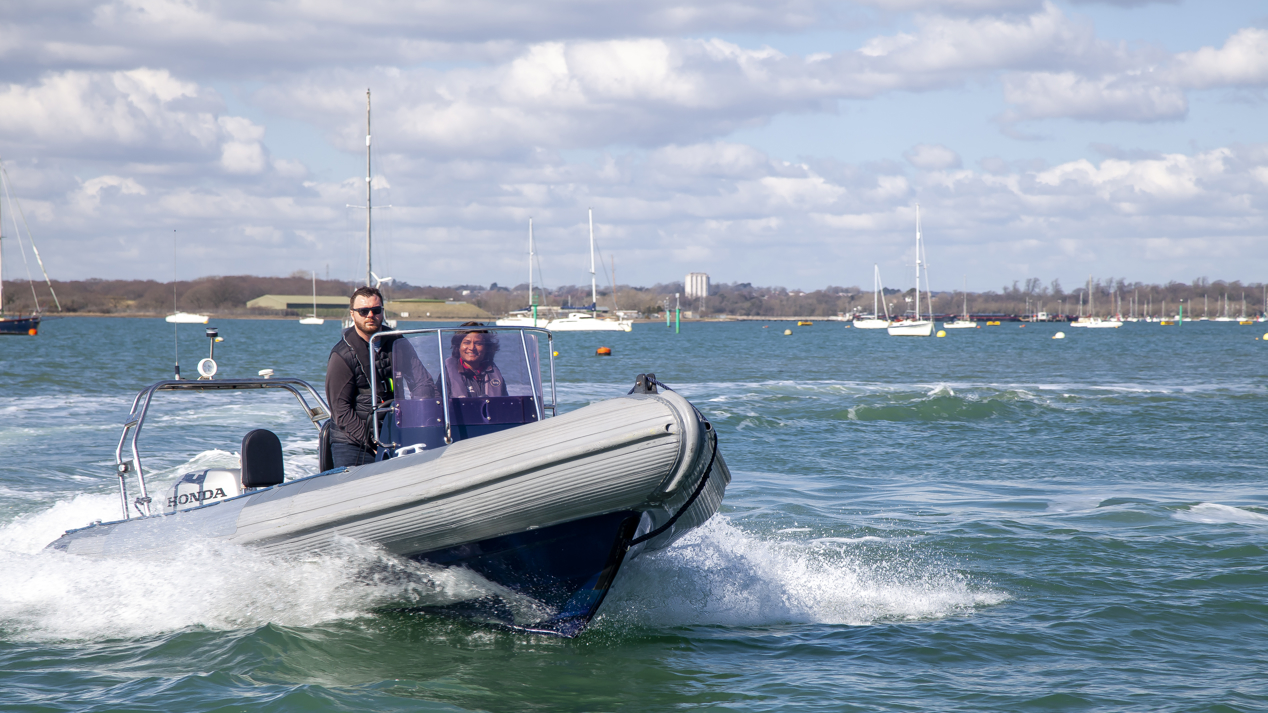Children's lifejackets and buoyancy aids
Children's lifejackets and buoyancy aids are strongly recommended for young people, toddlers, and babies, to support and keep their heads above water
Personal floatation devices
Personal floatation devices come in two main forms: buoyancy aids and lifejackets. When worn correctly, these can help save a child's life.
Buoyancy aids
Buoyancy aids are suitable for children in situations where help is close at hand. These flotation devices assume that the wearer can help themselves to some degree by swimming to safety and can keep them stay afloat until help arrives.
Lifejackets
Lifejackets have a collar designed to keep a person's face out of the water, making them ideal for small children and non-swimmers. If the wearer is unconscious, a lifejacket will turn them to a safe position, requiring no subsequent action from the wearer to maintain their position.
When sailing with children, it's important to consider whether an automatic or manually inflatable lifejacket is suitable for their age and activity on the water.
What do the levels of buoyancy mean?
Buoyancy aids and lifejackets have different levels of buoyancy indicating the their intended use on the water. There are four main buoyancy levels: 50, 100, 150 and 275.
In general terms, Level 50 is a buoyancy aid designed for when help is close at hand. Level 150 is a general-purpose lifejacket more suited to offshore cruising and motor boating.
Children's lifejacket sizes?
Always take the child with you when buying or hiring a lifejacket, as this will ensure you choose the right weight category and fit. Consult a member of staff or an instructor for help if you need it.
Lifejackets for children and babies are available in a wide range of sizes with specific weight ranges. Take care to select one with the correct weight range that's also a comfortable fit. You could come across two lifejackets with the same weight range, but with different lengths. For small children this extra length may limit their mobility or ability to sit down!
Some lifejackets will be more suitable to your child's height and weight than others. Where possible test the lifejacket in a controlled environment to ensure it works effectively for them. If a lifejacket is too big, there's a risk that its flotation properties will not work as effectively. In the worst case, a child could slip out of their lifejacket.

Lifejackets for babies
Lifejackets are available for babies. However, new-borns and smaller babies may not find a suitable fit, as the jackets will not be small enough to correctly support them. Babies and children's lifejackets typically have more buoyancy around the neck and head. This is because a child's head makes up a larger proportion of their overall weight, making them more top heavy than adults.
You should also be aware that if a child is wearing nappies, this can also impact the flotation properties of their lifejacket. With small children its recommended that they wear swim nappies, as these don't get as heavy as ordinary nappies when wet.

How to fit a children's lifejacket
Guidelines suggest you should get a lifejacket that fits your child now rather than one they will grow into. A good way to judge this is to fit and adjust the lifejacket on the child and then lift it from the top. You shouldn't be able to lift it more than 2.5cm from the child's shoulders if the fit is correct.
As with any lifejacket, you must ensure that crotch/thigh straps are fitted correctly. These will keep the lifejacket securely in place by preventing it from riding up, helping to keep your child's head above water.
Discover more about lifejackets.
Explore our safety hub
For more information about staying safe on the water visit the RYA Safety hub.

